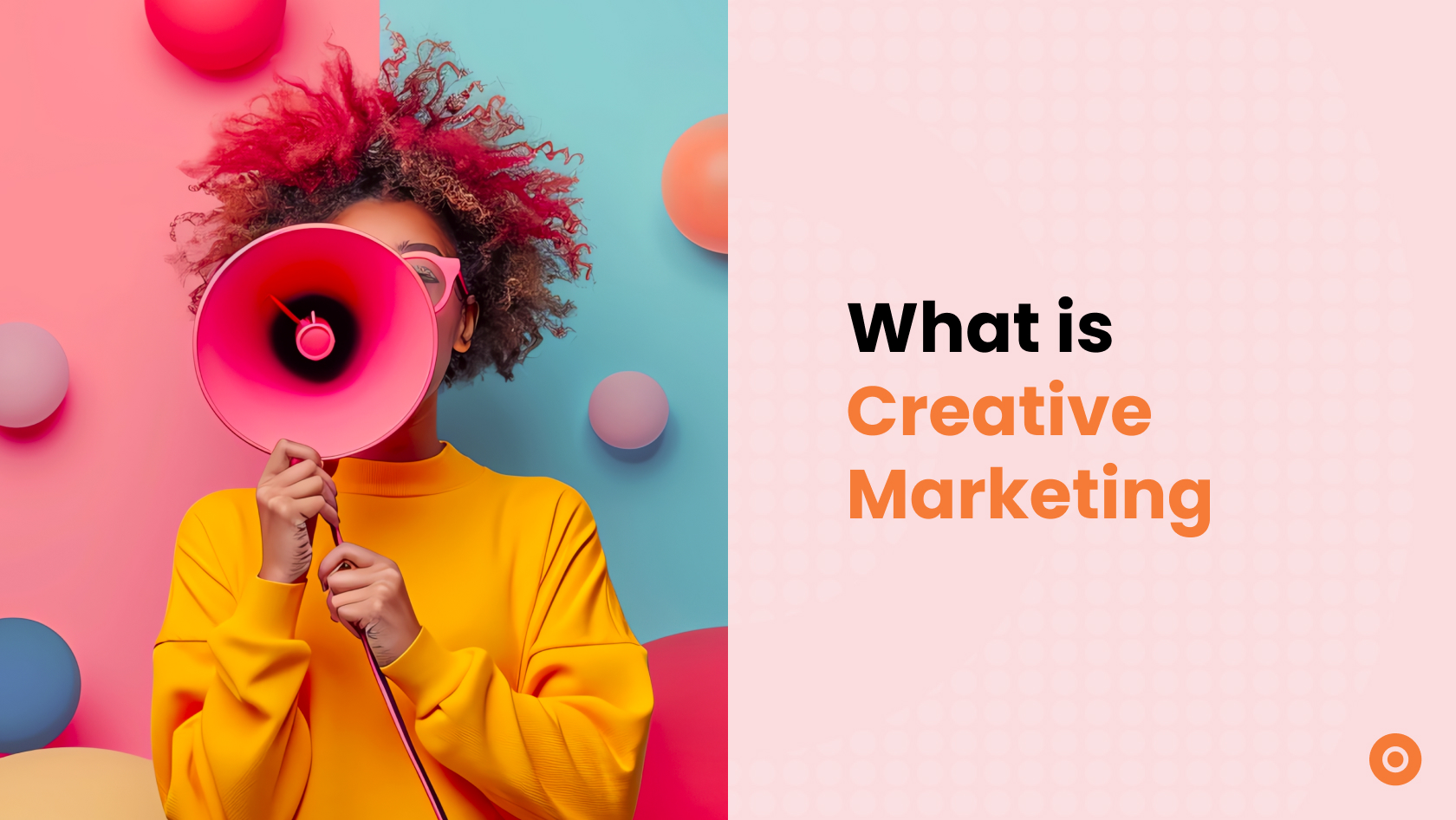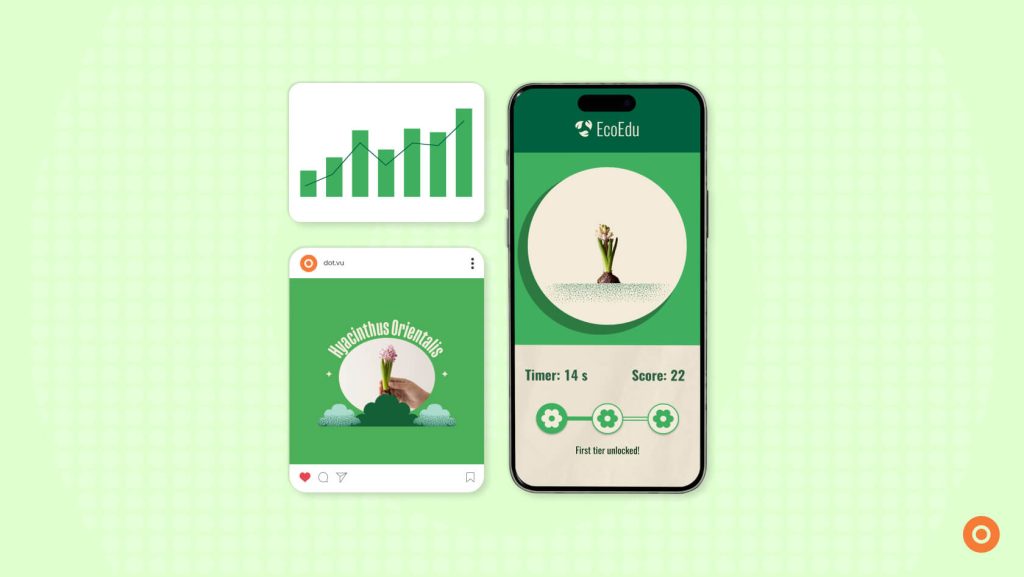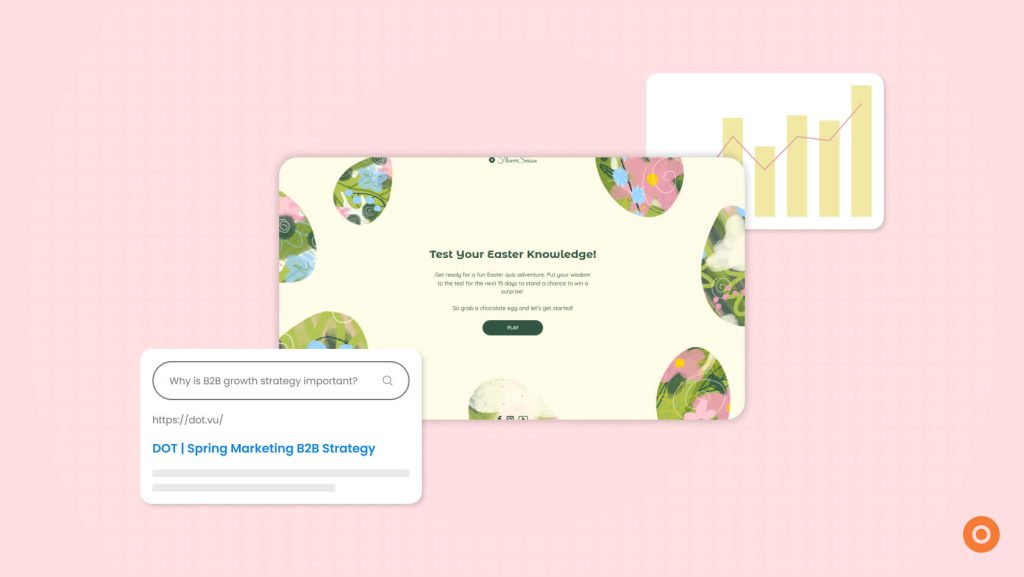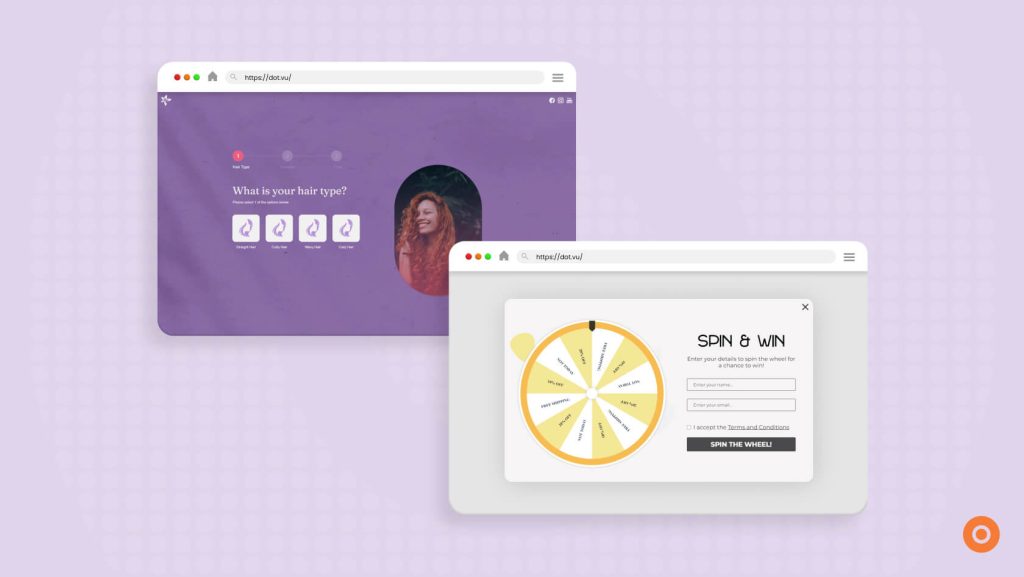
Creative marketing is one of the best marketing strategies to make sure your brand isn’t forgettable.
You scroll past 97 ads before you even brush your teeth. Your inbox is full of “LIMITED TIME OFFERS!” that are neither limited nor timely. And your brain is permanently numb to banner ads, unless they’re for something wildly weird… like inflatable hot dog costumes for dogs. (Okay, that one you clicked.)
That’s where creative marketing enters the chat.
It’s not about being artsy or making pretty things. It’s about making things that stick — that punch through the noise, hug your brain, and whisper “Hey, remember me?” a week later. Whether you’re running a solo side hustle or leading a team at a big-ass brand, creative marketing is how you stop being invisible.
So, what exactly is creative marketing? And how do you do it without setting your budget — or reputation — on fire? Buckle up. We’re about to get into the messy, fun, strategy-packed side of marketing that actually gets remembered.
Table of content:
What Is Creative Marketing?
Creative marketing is the wild child of the marketing family. It breaks rules, tells stories, flips expectations, and doesn’t apologize for doing things differently.
At its core, creative marketing is about designing campaigns and content that spark emotion, surprise people, and make your brand unforgettable. It’s part creative strategy, part psychology, part “hey, what if we made a cereal box sing?”
It can look like:
- A TikTok trend that spirals into a national headline.
- A product launch that feels more like a music festival than a sales pitch.
- A campaign that takes a boring topic and makes it absurdly fun.
It’s about connecting with people — not demographics, not user segments — actual people. That’s what makes it work.
Why Creative Marketing Actually Matters
Look, creativity is your competitive advantage. And there are receipts.
Marketing creativity statistics worth knowing:
- Brands that prioritize creativity see a 2x increase in growth (McKinsey).
- Emotionally resonant ads deliver 23% more sales uplift (Nielson).
- 80.5% of marketers believe creative quality is one of the top factors defining campaign success (MarketingWeek).
So yeah, creativity = money. But also? Creativity = meaning. And meaning sticks.
Creative marketing campaigns make people pause and maybe even smile, think, or hit share. That moment of human connection? That’s gold.
Creative Marketing Key Actions
You can’t just throw some glitter on a Canva post and call it creative. (Well, you can, but we’re going for better than that.)
Here’s what makes creative marketing tick:
1. Break patterns.
The human brain is designed to ignore what it expects. Creative marketing wins when it subverts that expectation. Flip the format. Use humour where people expect seriousness. Take the billboard nobody notices and paint it upside down.
2. Tell a good story.
Brand storytelling is your secret weapon. Facts tell. Stories sell. People don’t connect with features — they connect with feelings, moments, identities.
3. Tap into emotion.
Make people laugh. Cry. Rage. Nostalgic feels? Even better. Emotion is what makes marketing memorable. Think less “benefits,” more “feels.”
Read more on emotional marketing here!
4. Think beyond the screen.
Creative content marketing isn’t limited to Instagram carousels. It can be a live stunt, a weird podcast, a fake product drop, or even a Spotify playlist. Creative advertising lives wherever attention does.
Creative Marketing Examples
Now that you know the key actions required in creative marketing, let’s look at some creative marketing examples that actually worked because we’re not here to just talk theory.
1. Spotify Wrapped
Simple data turned into personalized stories. Suddenly, everyone’s sharing their Wrapped — for free. That’s content marketing creativity in action.

2. IKEA’s “ThisAbles” campaign
IKEA launched 3D-printable add-ons to make furniture more accessible — and gave them away. Emotional, practical, inclusive = unforgettable.
3. Barbie Movie Marketing
A pink billboard with literally no text….

To a Dreamhouse AirBnB, this was marketing innovation at its best — and it exploded.

Interactive Creative Content
Okay, cool ads are great—but let’s talk about the next level of modern marketing: Interactive Content.
You know what people don’t want? Another static infographic or a 1,500-word wall of text with one lonely CTA button at the end.
You know what they do want? To play. Click. Tap. Choose. React. Participate. Feel like the main character for once.
That’s why Interactive Content is crushing it in creative digital marketing — because it flips your audience from passive consumers into active participants. And that, my friend, is where the magic (and the conversions) happen.
Why It Works
- It’s sticky. Interactive campaigns keeps people on your site longer, which is catnip for Google.
- It’s shareable. Nobody screenshots a whitepaper. But a “What Kind of Marketer Are You?” quiz? All over LinkedIn.
- It’s personal. Product Recommenders, calculators, and pick-your-path content feel tailored, even when they’re not.
- It converts. Interactive Content has been shown to generate 2x the engagement and conversion rates compared to static content. Yeah, read that again.
Here’s your ultimate guide to Interactive Content.
Creative Marketing Strategies for Small Business
Hmm… but what if you’re not Barbie or Spotify? Can small brands do this too?
Definitely yes. In fact, smaller businesses often have an edge — more agility, more personality, fewer approval chains.
Here are creative marketing strategies for small business that actually work:
- Turn your customers into content. Share real stories, DMs, photos. Make your people feel like heroes.
- Make boring things funny. Sell plumbing services? Drop a meme campaign about “emergency toilet moments.”
- Use your weird. Every business has quirks. Lean into yours. Is your founder a beekeeper? Own it.
- Create moments, not just ads. Host weird events, local collabs, pop-ups. Real experiences are hard to ignore.
You don’t need a big budget. You just need guts and a little taste for chaos.
How to Measure Your Creative Marketing Efforts
Let’s kill the myth that creative = unmeasurable. You can 100% track the impact of your creativity. You just need to know what to look for.
Track these KPIs like a pro:
- Reach & Impressions: How many eyeballs saw your weird masterpiece?
- Engagement: Shares, saves, DMs, stitch videos, comments — the good stuff.
- Conversions: Did people click, buy, subscribe, sign up?
- Brand Sentiment: Use tools to track how people feel about your brand post-campaign (think: social listening, polls, reviews).
- Virality metrics: Velocity of shares, time-to-reshare, influencer lift
Let’s Get Weird (In a Strategic Way)
Creative marketing isn’t about being random. It’s about being intentionally different. It’s strategy wrapped in glitter, storytelling dipped in data, and heart served with hustle.
If you’re tired of playing it safe, it’s time to build a brand that people actually want to engage with. One that surprises them, delights them, and maybe even makes them laugh-snort through their nose a little. Interested in using Interactive Content? Start your free trial today and choose from over 300+ Interactive Content templates!
Now go make something worth noticing.



